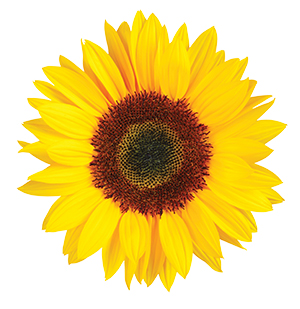
Audubon Adventures

Activities
 Activity 1
Activity 1
Make a Pot, Plant Seeds, Grow Bird Food!

 Teacher-led Classroom/Field Activity
Teacher-led Classroom/Field Activity
Engineering Design, Life Science
How can you make your own pots for starting seeds and grow plants to provide food for birds?
 Objective:
Objective:
Students follow a model for creating seed-starting pots out of newspaper, then sow seeds in them and eventually plant the seedlings in the ground or larger containers.
Planning Ahead:
This project is best started two weeks to a month before the end of the school year. It takes 80 to 100+ days for sunflowers to reach maturity. Students will make the newspaper pots and start the seedlings at school, then take them home and transfer them to larger pots or to the ground. Review this photo sequence on how to make newspaper pots and practice making them so you can guide students as they make their own.
Students will need:
- Several sheets of newspaper (approximately 12” x 22”) for each student (to allow for starting over if necessary when making a pot, and also to let students make more than one pot)
- 10- to 15-ounce can, one for each group of 2-3 students
- Masking tape
- Potting soil
- Scoop or large spoon
- Sunflower seeds—the kind sold in packets for planting (several for each student). Choose “dwarf” varieties rather than “mammoth” varieties because they produce multiple flowers per plant and can be grown in smaller pots and spaces.
- Waterproof tray(s) or shallow pan(s) (as many as needed to hold all pots)
- Spray bottle (for watering)
- Craft sticks (one for each newspaper pot)
- Small paper bags (one for each newspaper pot)
- “Growing Sunflowers for Birds” reproducible (one for each child)
Suggested time:
Preparation time and planning time and at least 3 class periods: one class period to learn about starting seeds; one class period to make pots; one class period for planting seeds in pots; ongoing class time to observe growth of seedlings until they are ready to be taken home.
What to do:
- Let students watch you make a newspaper pot. Explain the process as you go. (Note: As an extra step to make the pot hold together, use a piece of masking tape to secure the folds on the bottom.)
- Now have students make their own pots following your model. Give them help as needed, but challenge them to problem-solve along the way as much as possible.
- Have each student fill her/his pot(s) with potting soil, carefully packing it down without damaging the newspaper pot.
- Give each student one sunflower seed for each pot. (Ideally, each student will have at least two pots, since there’s no guarantee that every seed will sprout.) Demonstrate how to create a hole about 1 inch deep in the soil, place a seed in the hole, and then firm the soil on top.
- Have students write their names and the planting date on craft sticks and gently place a stick in each of their pots.
- Place the pots in a waterproof tray or pan and spray them gently with water so the soil is wet throughout but not soggy. Place the pan or tray in a sunny window away from cold drafts.
- Make it a regular part of class to check the pots daily. They should be kept evenly moist, but not soggy. Students should record the date seedlings emerge (usually 10 days to 2 weeks after planting) and measure growth over time.
- When the seedlings are 4-5 inches tall, they are ready to be transplanted—newspaper pots and all—to the ground or larger containers.
- Distribute copies of the reproducible, “Growing Sunflowers for Birds,” one for each student. Review the information and instructions with students, making sure they understand everything.
- To send the seedlings home with students, place each one in a small, flat-bottom paper bag and carefully fold down the top. Explain to students that they need to handle the bag carefully and keep the plant upright until they get it home.
- In succeeding days (until the end of the school year), invite students to report on the progress of their sunflower plants and share photographs if they have them. Encourage them to keep a record of the plants’ growth over the summer with photographs, sketches, and notes in a journal.
Photo: Sean Graessar; iStock.




